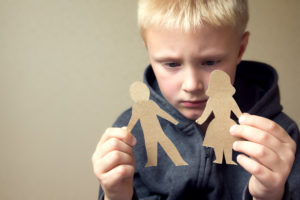 Traditionally, the legal definition of a parent has required a biological or adoptive tie to the child.
Traditionally, the legal definition of a parent has required a biological or adoptive tie to the child.
However, a recent ruling from the New York State Court of Appeals alters this standard and expands the definition of a parent to include caretakers of the child who are neither related to nor the guardian of the child or children.
The decision, which was sparked by two cases involving custody disputes between lesbian couples after separation, states that the old way of defining parents “has become unworkable when applied to increasingly varied familial relationships.”
The court’s decision overturns a 25-year-old legal precedent stating that “where a petitioner proves by clear and convincing evidence that he or she has agreed with the biological parent of the child to conceive and raise the child as co-parents, the petitioner has presented sufficient evidence to achieve standing to seek custody and visitation of the child.”
The court based the decision in part on research that “reveals the trauma children suffer as a result of separation from a primary attachment figure – such as a de facto parent – regardless of that figure’s biological or adoptive ties to the children.”
That is the same research that forms the foundation of the shared parenting movement.
As noted on the National Parents Organization blog, the reference to “a” primary attachment figure rather than “the” primary attachment figure is key and could be significant for the shared parenting movement.
The family court system tends to designate one parent as the custodial parent who holds the majority of parenting time while the other, typically the father, is relegated to non-custodial status and only afforded visitation. Nothing that it’s possible for children to have multiple “primary attachment figures” acknowledges that both parents can play equally important roles in the child’s upbringing.
In these cases, it is referencing the child’s second (non-biological) mother. It could (and should) just as easily extend to fathers.
Ideally, this acknowledgement that a child is harmed by the separation of a loving parent will prompt courts to recognize the importance of a child’s relationship with each parent and lead them to order more shared-parenting in both heterosexual and same-sex separations.
However, it’s also possible courts continue ordering sole custody, in which case the main effect of the decision will have been to open the door to a whole new set of potential litigants as more same-sex couples will be embroiled in custody battles.
It seems as though the New York State Court of Appeals made a sound decision grounded in noble reasoning, but it will be important to see how family courts carry out the ruling before declaring it a success for families.

